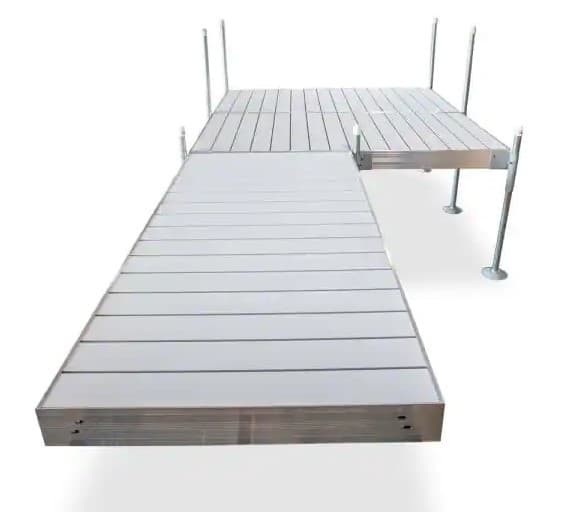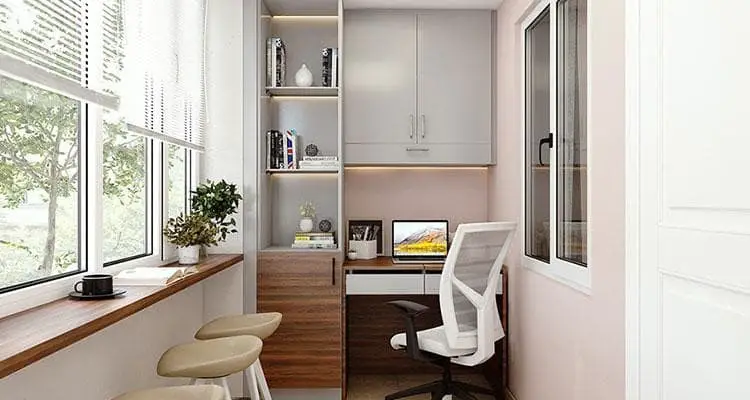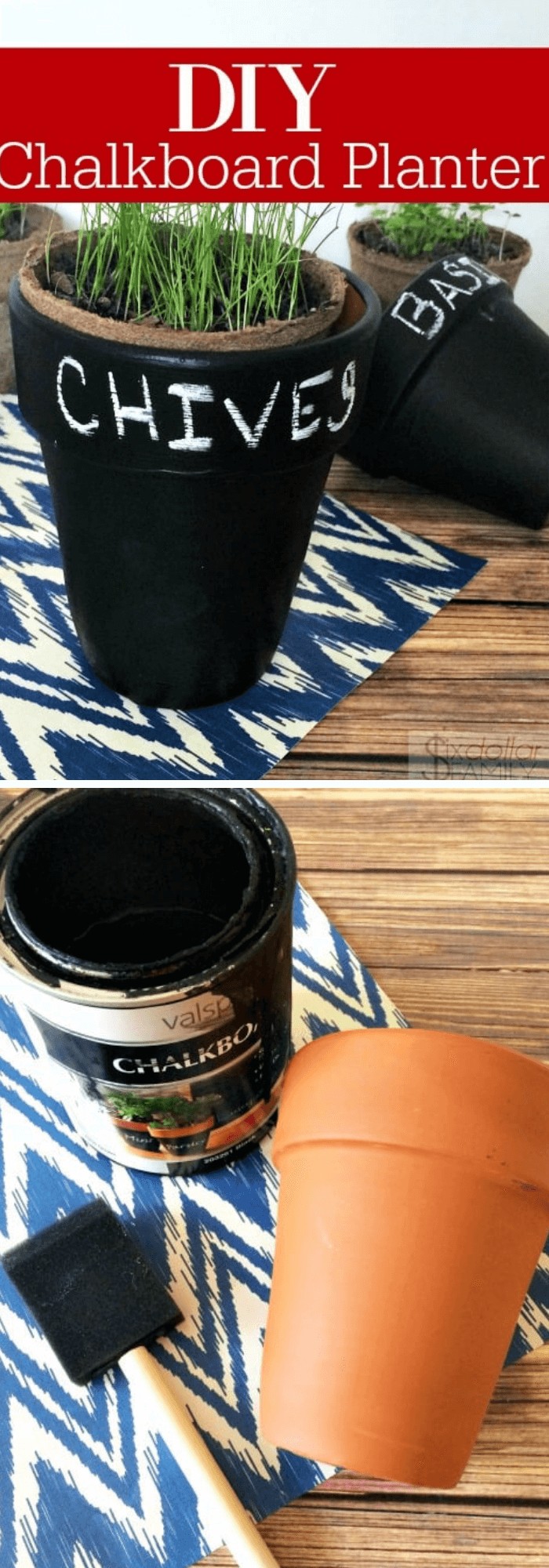35+ Best Indoor Garden Ideas And Designs (With Pictures)
While plants can thrive in gardens or on verandas, their benefits extend far beyond these settings. Even without an outdoor space, it’s possible to reap the rewards of plant life indoors. Whether you’re looking for a way to enjoy fresh greens year-round, craving a connection with nature, or simply seeking a calming atmosphere, starting an indoor garden can be a great option.
The key characteristics of an indoor garden will depend on your goals, level of experience, and the circumstances surrounding it. From aesthetic appeal to functional purpose, there are many factors at play.
Feeling overwhelmed? Let’s get started with some creative indoor garden designs to inspire you.
35 Indoor Garden Ideas
Greenery should be used to surround your bathtub.
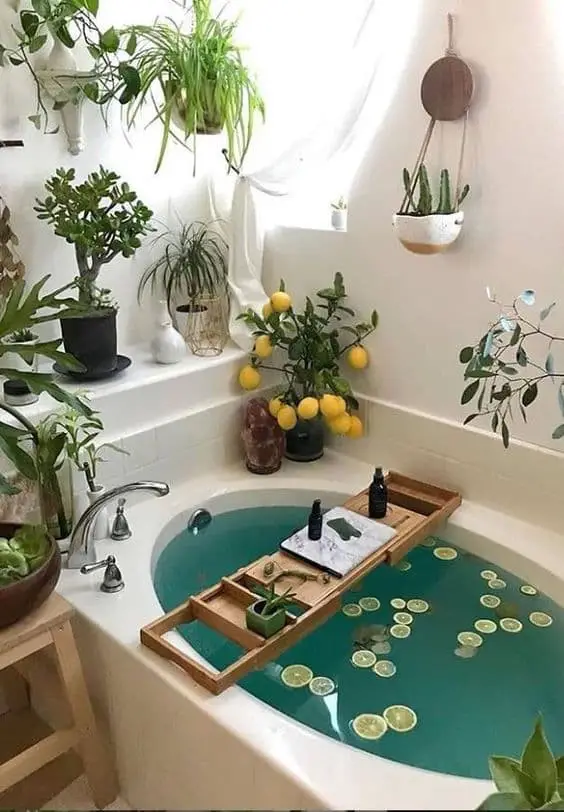
We’re experiencing a severe case of bathroom fever around here, and our latest obsession is all about bringing a touch of elegance and warmth into this often-underutilized space. The galvanized containers add a sleek modern twist to the color palette, while the fringed drapes and chandelier inject a cozy ambiance that makes you want to linger. But what truly steals the show are the chamber palms, which thrive in this setting and radiate a sense of life and energy.
It’s no wonder we’re hooked – the combination of neutral-hued furnishings and lush greenery is nothing short of magical. If you’re feeling inspired, try bringing some plants into your own bathroom and discover the transformative power of a little indoor gardening. With so many options that can thrive in humid conditions, there’s never been a better time to get creative and give your bathroom a unique touch.
Herbs should be abundant in your kitchen.
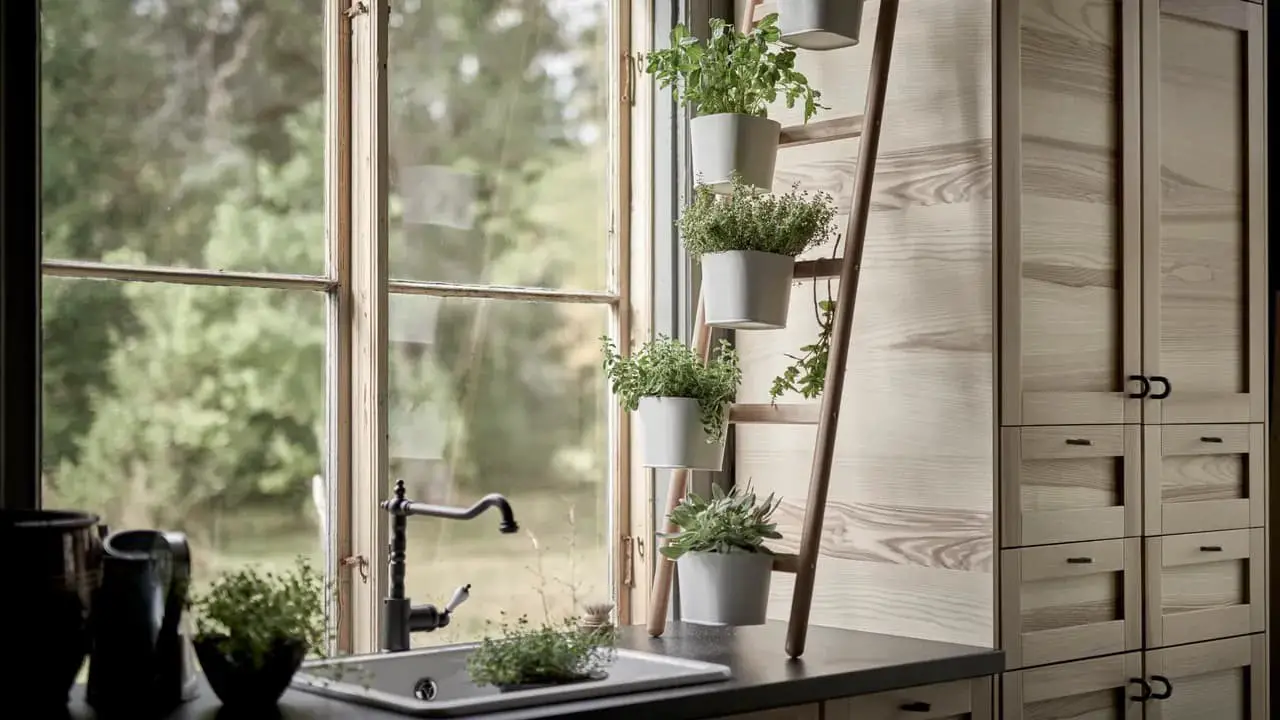
Herbs are more than just a flavorful addition to any dish; they can also elevate the aesthetic appeal of any room. The mere thought of a sprinkle of chives on young potatoes or the vibrant green hue of mint leaves in a mojito is enough to get our senses tingling. And let’s not forget the unmistakable aroma of basil, which seems to transport us to a sun-kissed Italian countryside when we’re blending it into pesto.
But herbs aren’t just limited to their culinary applications; they can also be used as stunning indoor plant concepts. Imagine them nestled in a vibrant array of multi-colored containers on your kitchen counter, or perhaps perched on a windowsill where you can easily reach for them when inspiration strikes during meal prep.
At the bottom of your bed, create a luxuriant planter.
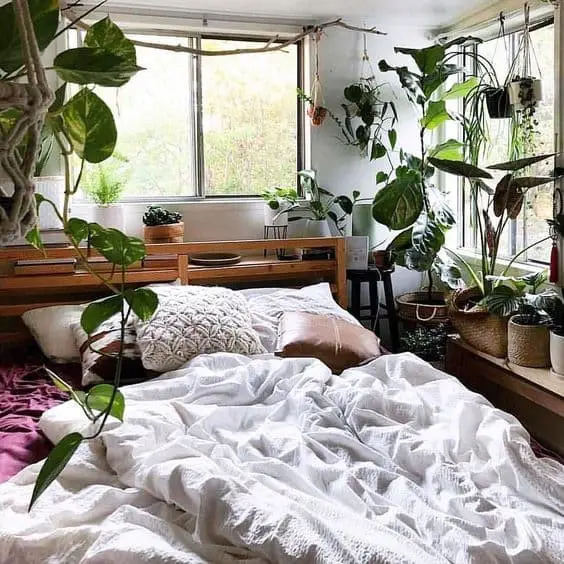
Incorporating interior plants into your workspace or home can be an effective way to create a more enjoyable and healthy environment. One of the key benefits of using plants as room dividers is that they can help maintain a sense of solitude, even in small spaces. For example, placing plants at the base of a cot in a tiny room can create a cozy and peaceful atmosphere.
In addition to their role in increasing oxygen levels and acting as sound relievers, plants are also a great way to aesthetically divide a space without relying on large furniture pieces – making them an ideal choice for offices! Furthermore, clustering plants together can actually create a mini-ecosystem, known as ‘transpiration,’ which helps keep the plants healthy and thriving.
Transform the dining space into a jungle
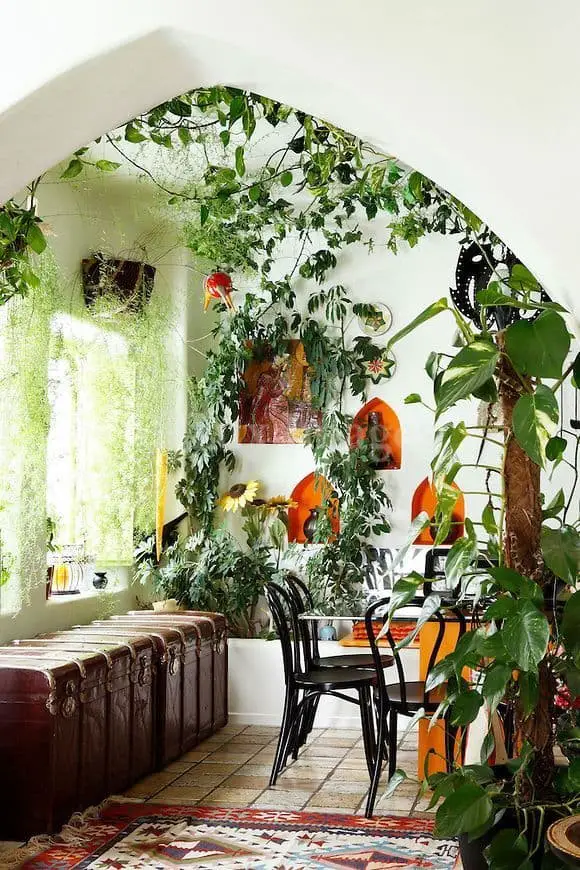
The Monstera plant, affectionately known as the Swiss cheese plant due to its unique holes, has captured the hearts of many homeowners and social media enthusiasts alike. Its impressive size, striking appearance, and ability to transport any indoor space to a lush jungle setting make it a popular choice for home decor. Pairing it with shelves filled with potted plants, such as spider plants, creates a low-maintenance look that’s perfect for the dining room.
Imagine enjoying your morning breakfast or evening dinner party amidst the lush greenery and natural ambiance it brings.
A bar cart may be used in a variety of ways.
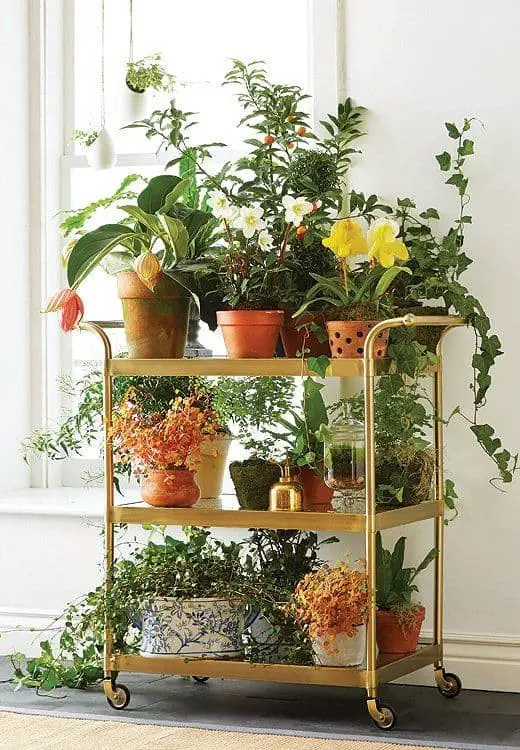
While some may suggest storing drinks elsewhere, we firmly believe the imperfections of an antique sphere bar are worth embracing. The addition of succulents, artfully arranged in antique glasses, lends a whimsical charm to the space. The subtle contrast between the lush greenery and the vintage setting creates a captivating focal point that’s sure to spark conversations among visitors.
As the eye wanders down to the lichen- and moss-covered base, the overall effect is nothing short of enchanting – a perfect centerpiece for a cozy sitting area that invites exploration.
Color your room to fit the color scheme of a living room.
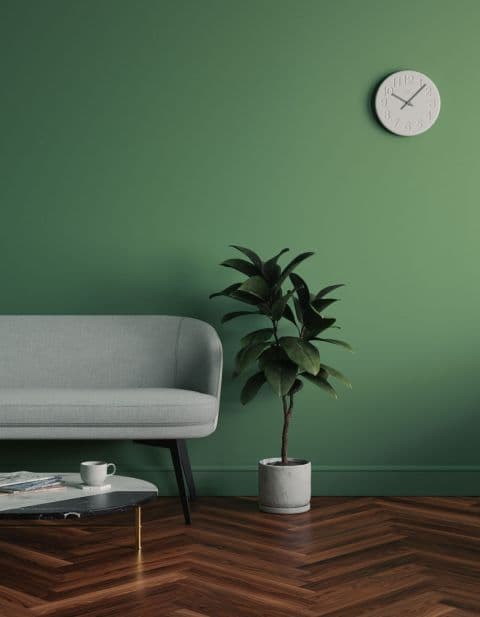
When space is at a premium or walls appear bare, think vertically. A lush green wall can still make a striking impression, even in small doses. You can opt for pre-assembled systems available online or get creative by constructing your own living wall. For added inspiration, consider swapping out the traditional plants with low-maintenance indoor options like peace lilies, ferns, and philodendrons.
To really make a statement, pair a stunning contemporary blue wall covering with plush textiles for a bold and eye-catching combination.
Plants should be crammed in for maximum impact.
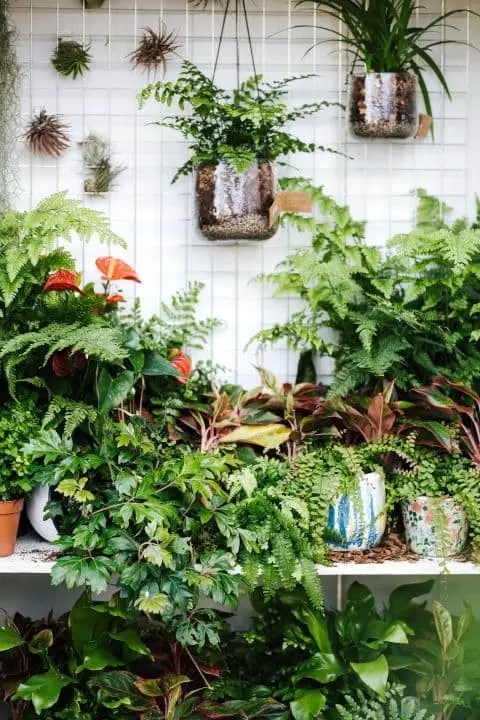
Why not transform an available space into a serene oasis by filling it with your favorite indoor plants? When surrounded by lush greenery, the ambiance becomes inherently peaceful and pleasant. As you tend to your pots, you’ll find yourself savoring the calming process of nurturing life. The visual appeal of dangling planters and the delicate tendrils of air plants peeking through wire frames is undeniable.
By creating this harmonious indoor garden, you’re not only adding a touch of natural beauty but also crafting a haven that brings joy to all who enter.
Consider using pastel pots.
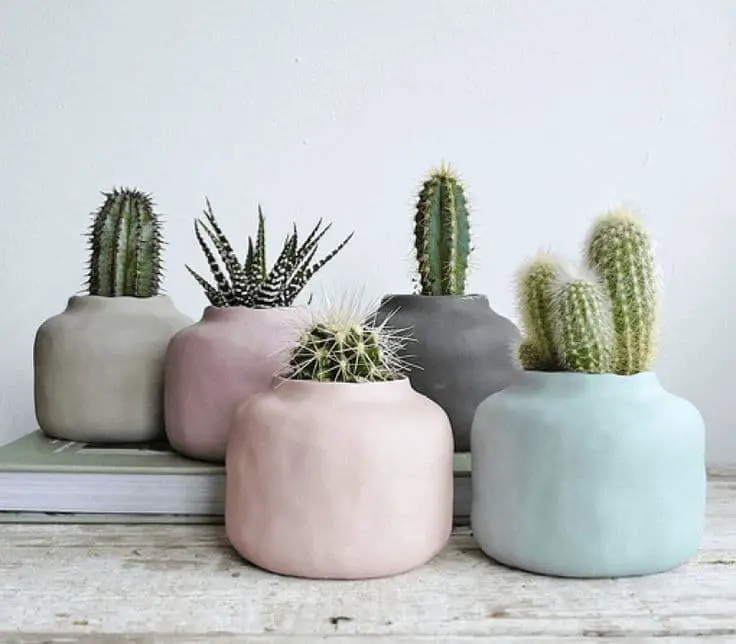
Imagine an aesthetic that’s more subdued yet equally captivating. Picture a harmonious blend of light greens, soft pink undertones, and an assortment of textures, all presented in a refined and elegant manner. This thoughtful design approach adds depth and intrigue to a space without overpowering it. It’s an excellent accompaniment to modern environments featuring neutral tones, where its understated charm can truly shine.
A riot of springtime hues
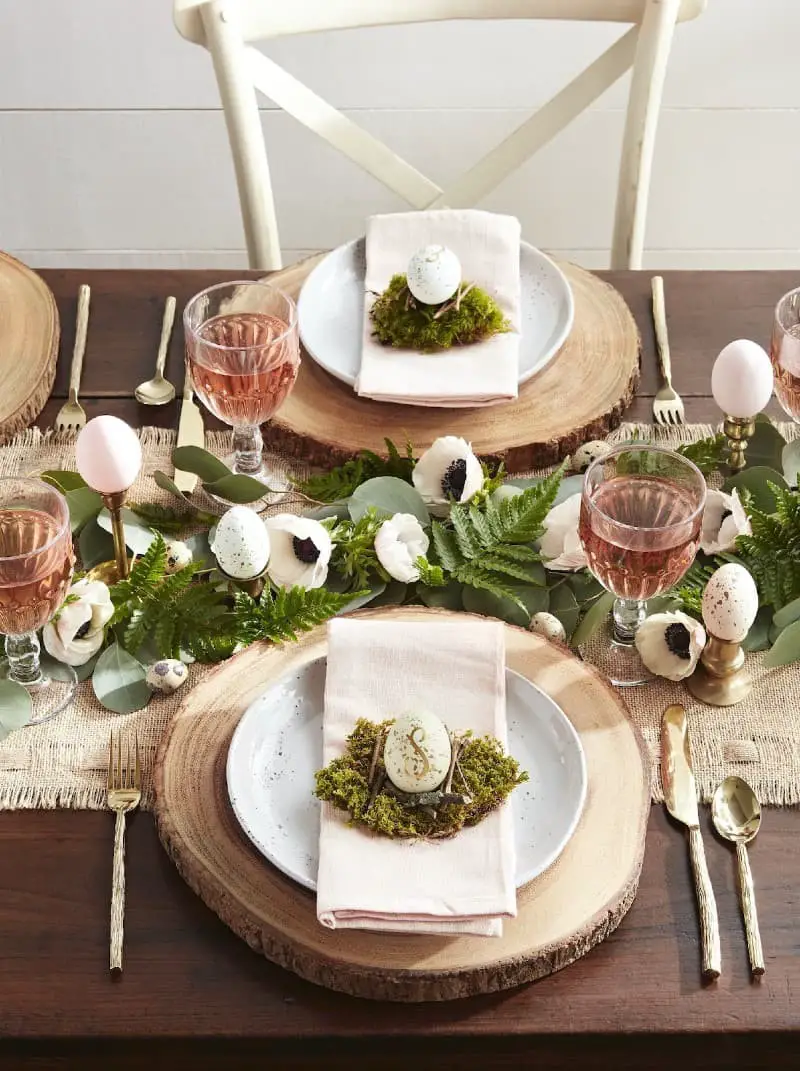
Bulbs are often thought to be exclusive to outdoor gardens, but with a little creativity, you can bring their beauty indoors. One way to do this is by planting a variety of bulbs in a large pot and placing it as a centerpiece on your dining table, much like the arrangement seen here. This will allow you to enjoy their vibrant colors and unique scents up close.
In addition to the lovely paperwhite narcissus, other options include amaryllis, grape hyacinth, snake’s head fritillary, and even tulips. By planting multiple pots and scattering them throughout your home, you can create a burst of springtime cheer that will brighten up any room.
Get the most of the space over your head.
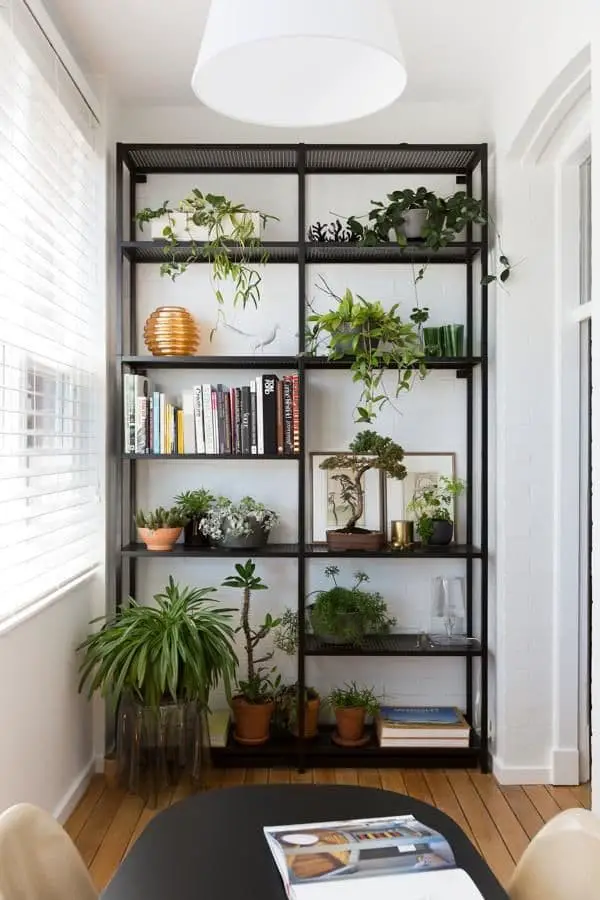
Transform a room’s vertical space by showcasing high-reaching plants that add drama and visual interest. Consider the mature size of each plant when designing your layout, taking care not to overcrowd shelves or corners. Some species naturally grow long and sprawling, making them perfect candidates for suspension from ceilings or metal beams. By incorporating these trailing plants into your design, you can create a quirky and visually appealing space that’s full of character.
Indoors, you can grow a tree.
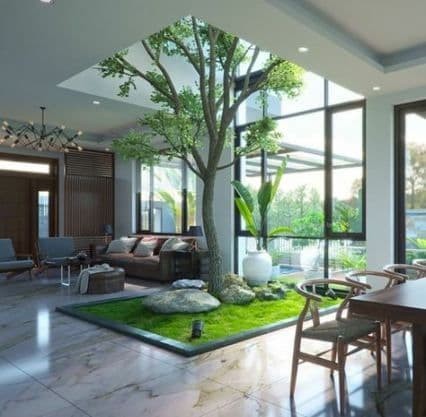
While your living room roof may not be as lofty or glass-domed as this one, you can still bring the outdoors in with the right indoor trees. Even small rooms can thrive with these plants, so long as they receive sufficient natural light exposure. The results can be truly breathtaking.
When it comes to citrus trees, calamondin orange is a great option. Its small, tart fruits add a pop of vibrant orange color to your space, while its fragrant white flowers provide an added sensory delight.
Another fantastic choice for indoor spaces is the fiddle-leaf persimmon tree, boasting large, glossy leaves that are sure to draw attention.
Make use of natural light.
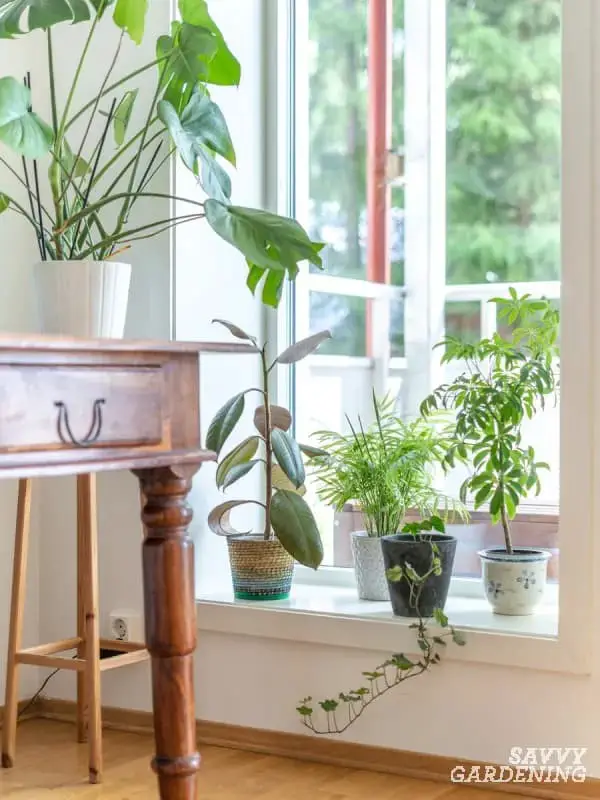
When it comes to positioning your plants, don’t underestimate the power of natural light. Take note of how sunlight enters each room in your home, considering that the sun rises in the east and sets in the west. This allows you to identify which areas receive direct sunlight during the day (south/west-facing spaces) and those that are shaded or dimly lit (north/east-facing spaces). If your plant can thrive in low-light conditions, place it in a north/east-facing area for optimal growth.
On the other hand, if your plant loves basking in the sun’s rays, a west- or south-facing space is ideal.
Make your home’s qualities stand out by framing them.

In many homes, plants are used to create a sense of harmony and visual interest by being strategically placed throughout the space. In this particular setting, the homeowner has transformed the hearth area into a stunning display, with various plant forms and textures working together to create a cohesive look. The plants’ ability to thrive in areas like mantelpieces, where they receive an abundance of natural light, is another significant advantage.
Not only do plants add pops of color to a space, but they can also flourish and produce beautiful results when given the right conditions. In this case, the interior begonia with its unique speckled pattern is a standout feature, adding an extra layer of visual appeal to the overall design.
Master the art of propagation.
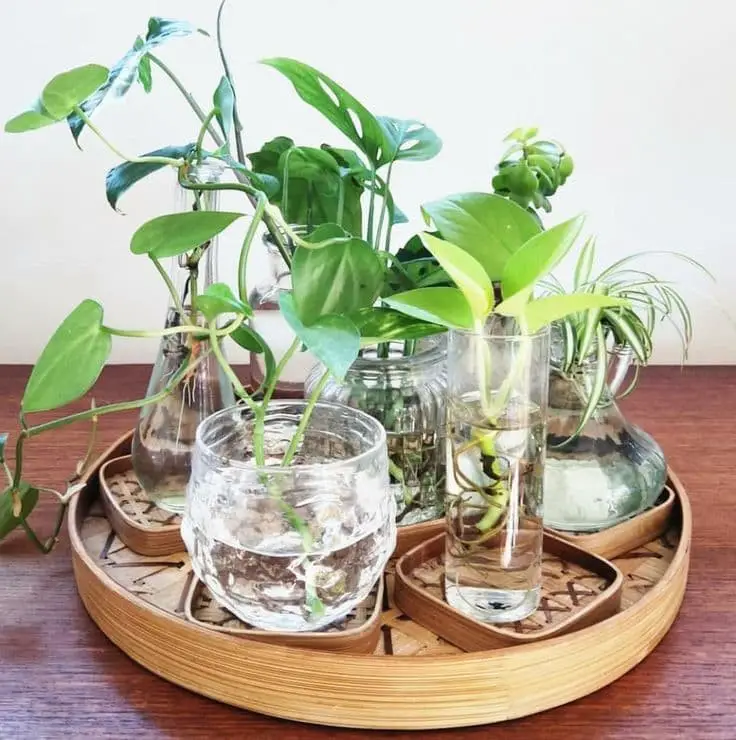
As a bonus, many houseplants are prolific breeders, producing offspring that can be easily propagated to create new plants. This natural process is not only fascinating but also allows you to multiply your favorite plants and share them with friends. For instance, Aloe vera and Pilea are two popular houseplants that produce ‘pups’ or offsets, which can be separated from the parent plant to create new individuals.
Mastering propagation techniques can be a game-changer for indoor gardeners, providing an endless supply of fresh plants without relying on store-bought varieties.
Beautiful gardens
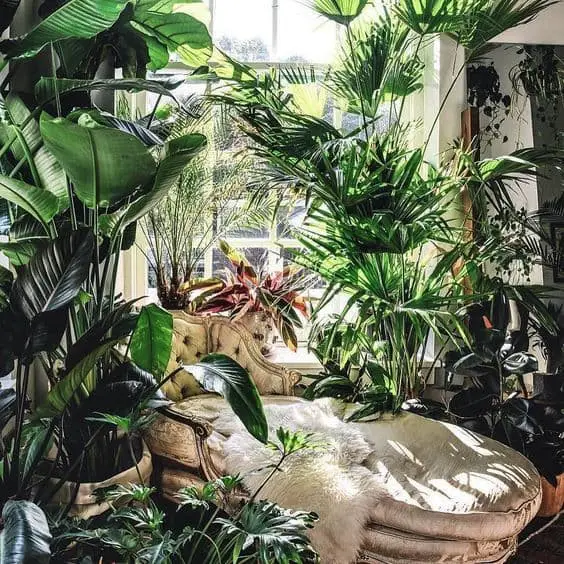
As you wait for your backyard’s transformation into a lush oasis next spring, bring some greenery indoors to brighten up your home during the winter months. One clever way to do this is by creating a dangling herb garden that can be hung from your kitchen or dining nook wall.
To make this unique planter, start with a wooden board and add some personality with a creative paint job. Then, attach galvanized steel wire to the back of the board using screws.
Next, attach small jars or containers using the wire, making sure they’re secure enough to hold your chosen plants.
Fill the containers with potting soil and plant herbs, succulents, or air plants. This charming dangling garden will not only add some greenery to your indoor space but also serve as a reminder that there’s beauty in every season.
Terrarium
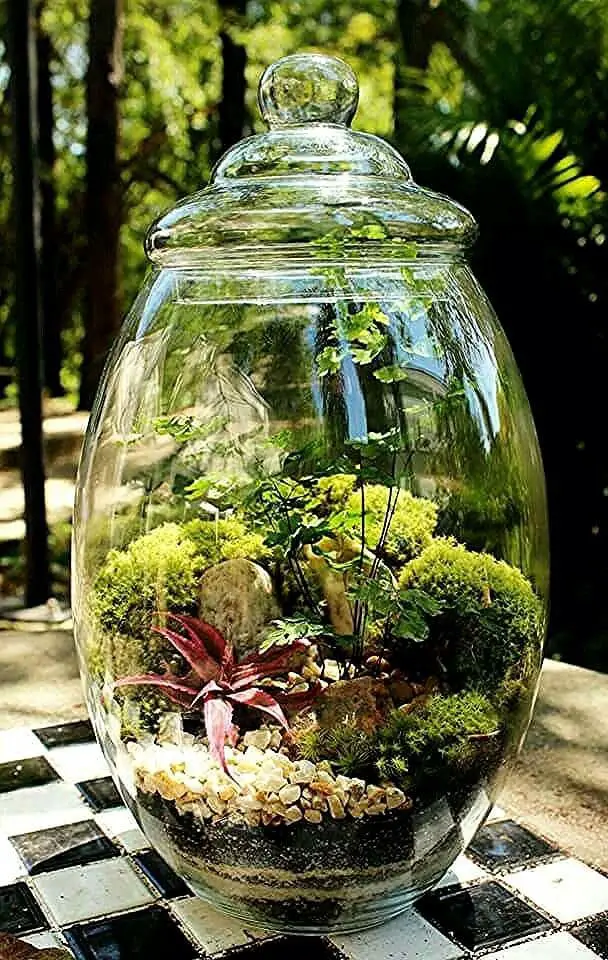
Introducing plants indoors doesn’t have to require extensive gardening knowledge or a green thumb. A low-maintenance approach is just as effective, and one of the most popular methods is by creating a terrarium using a glass container like an old fishbowl. Simply add some succulents, a layer of gardening mix, and decorative elements such as small stones or shells to create a visually appealing mini-garden.
What’s truly remarkable about this approach is that the succulents will only need occasional watering – a task that can be accomplished with just one brief session per week at most.
Ladder
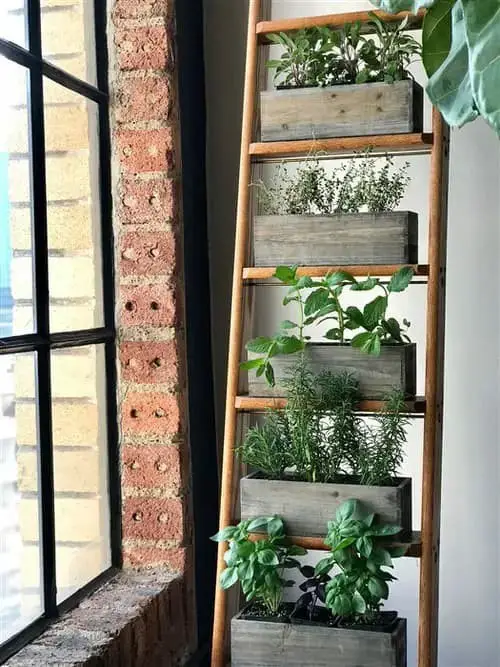
To create an indoor garden with layers, start by repurposing an antique or affordable ladder. Begin by assembling a shelving unit on each rung using wooden boards. Should one of the ladder’s steps be uneven, ensure stability by attaching additional wood planks to the shorter step. Once the shelves are constructed, give the entire ladder a coat of paint and allow it to dry before adding small potted plants as a finishing touch.
Planter made of leather
Add a bohemian touch to your home with these charming leather strap planters. By cutting out unique shapes – think rounds or triangles – from about a yard of leather (or more, depending on the size of your jars and desired quantity of plants), you can create a whimsical display that’s sure to delight. For an added wow factor, attach grommets to the forms and suspend them from the ceiling with rope and loops, creating a striking centerpiece for your bedroom or living room.
Hanging planters with gold chains
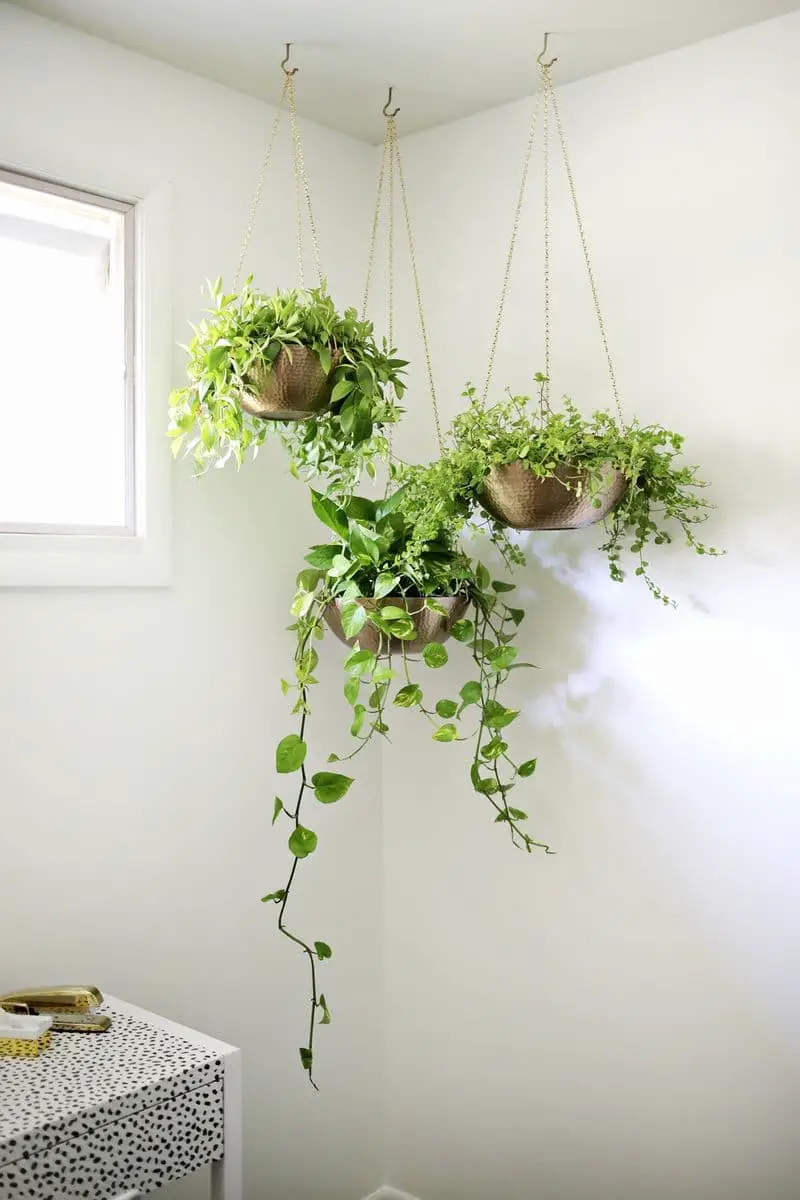
Elevate your home’s aesthetic by combining elegant containers with rustic charm. Consider a little white timber container, which can be easily transformed into a unique piece when suspended from a ceiling or wall using a gold chain – a simple find at most hardware stores. To add depth and visual interest, hang multiple containers at varying lengths to create a striking layered effect.
Water Propagation Wall with a Decorative Finish
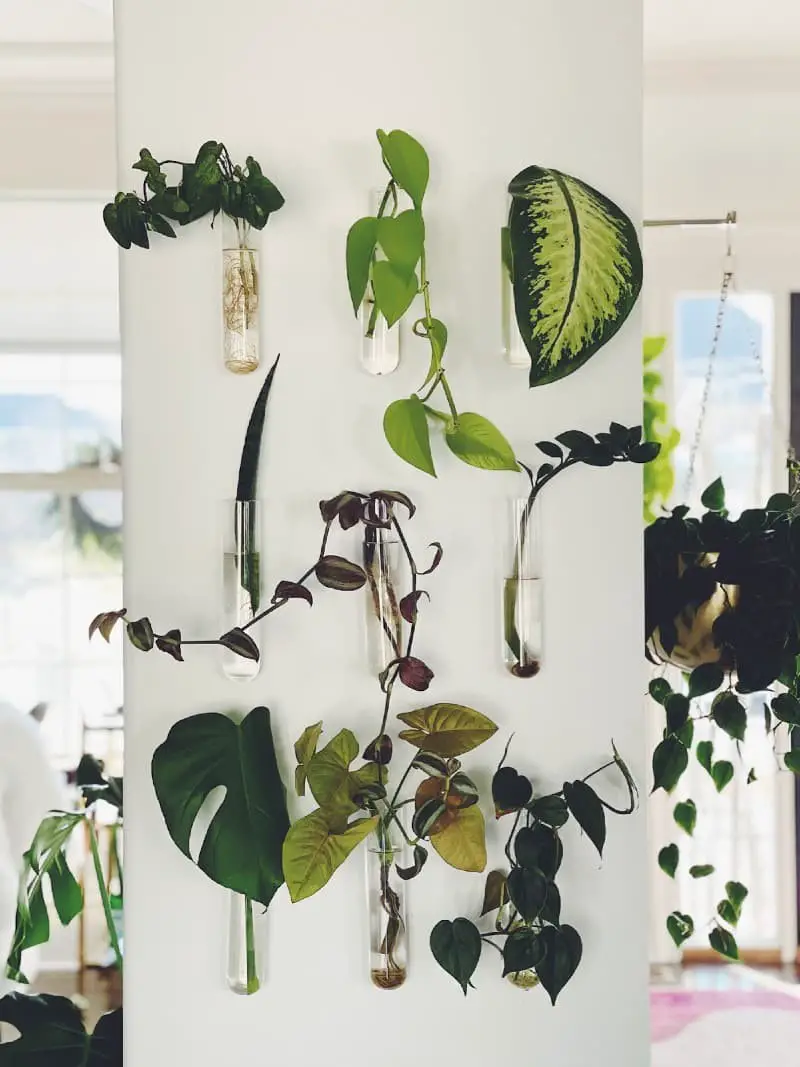
Consider taking your plant propagation game to the next level by attempting the famous water reproduction technique. This method allows you to increase your plant collection or gift some to friends and family while adding a decorative touch with glass containers on display shelves. To encourage successful rooting, replace the water every seven days and incorporate bloom lights placed above the cuttings on their shelf.
Collection of Low-Maintenance Cacti

While often touted for their hardiness and ability to thrive in arid environments, cacti also boast unique forms that lend themselves well to artistic interpretation. In fact, adding a few carefully chosen cacti to your home can create striking focal points that spark conversation with visitors. Just be mindful of placing prickly plants out of reach from curious pets and children.
Plant Shelves with Charm

Having dedicated bookshelves for specific plant species not only enhances visual appeal but also streamlines care. With a centralized watering station, plants are easily accessible and can be rearranged to optimize sunlight exposure and complement nearby aromatherapy devices like essential oil diffusers.
Collection of tropical items
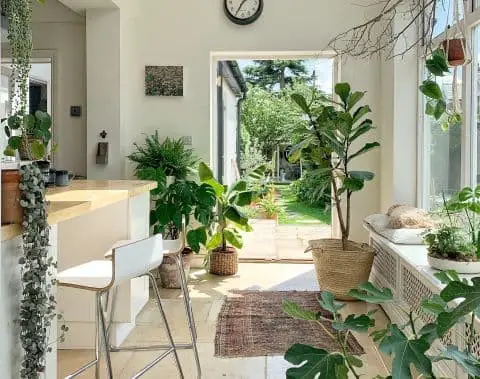
Transform your home into a lush indoor rainforest by cultivating an assortment of tropical plants that thrive in indoor conditions. These exotic blooms, vibrant foliage, and trailing vines can transport you to a tropical paradise without ever leaving your living space. While they do require some extra attention regarding humidity, water, and light, the ambiance they create will be well worth the investment.
You may be creative with a fairy garden.
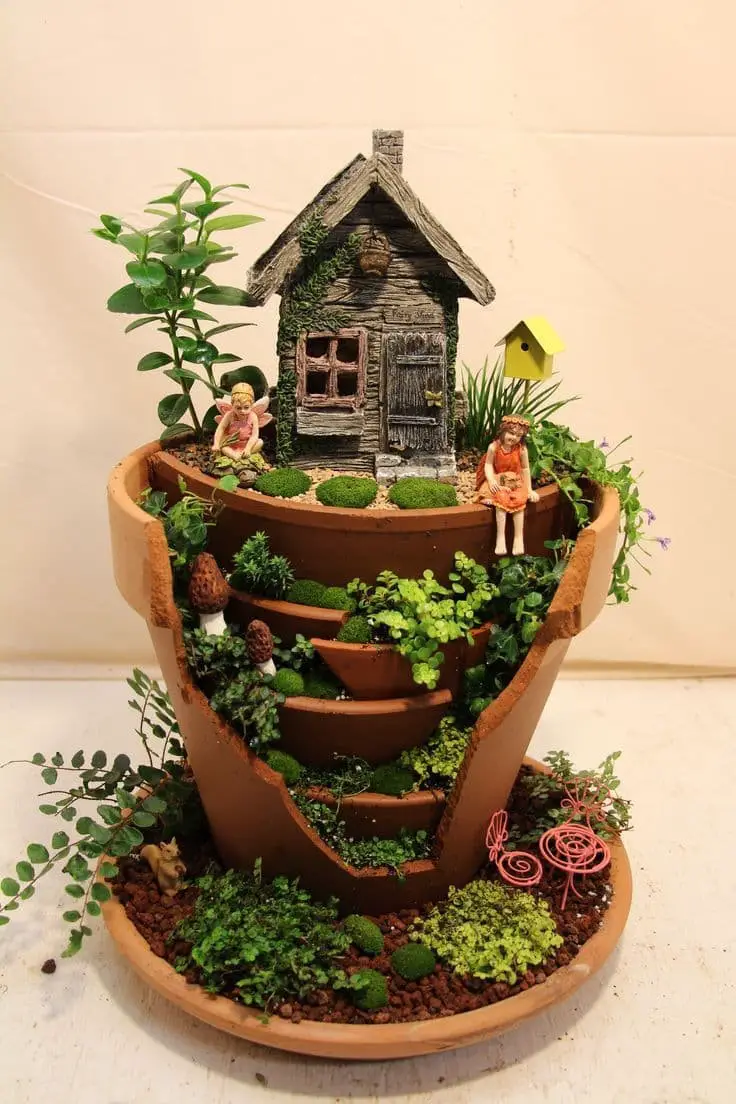
Enchanting fairy gardens are a delightful way to bring good fortune and joy into your home. These charming miniature gardens are filled with real, living plants that require minimal space and maintenance, making them an accessible and rewarding hobby for both children and adults alike. The process of nurturing a tiny garden, selecting the perfect plants, and watching it flourish can be a therapeutic and enjoyable experience.
Starting small is easy, even using unconventional containers like a damaged ceramic pot, which can become a unique and quirky home for your new garden. With a little creativity and imagination, you can create a beautiful fairy garden that will bring a touch of magic to your daily life.
Even the smallest apartment can accommodate an indoor herb garden.
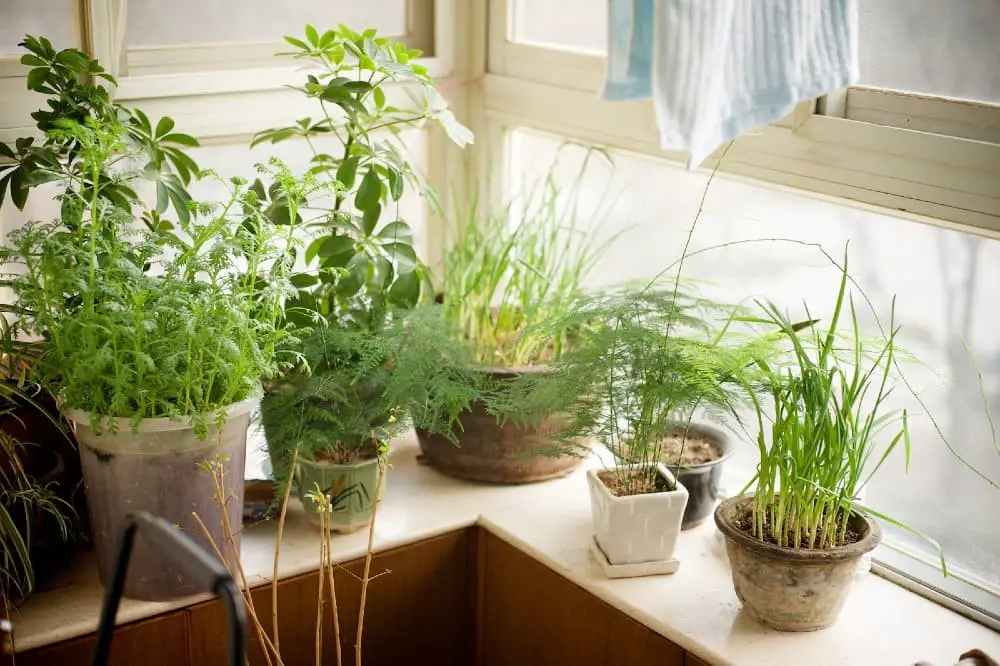
While apartment owners are no strangers to cultivating herbs on a windowsill, the constraints of living in a small space have led to a surge in innovative indoor gardening ideas. One such creative solution is the use of towering herb planters that make the most of vertical space. What’s more, herbs don’t require as much soil as other plants, making them an ideal choice for garden designs that need to conserve floor and counter space.
To take your herb cultivation to new heights – literally – pot them in mason jars or aluminum cans and utilize a wire rack, trellis, or repurposed wood as a support to train the stems upwards. This not only maximizes growing space but also adds a touch of industrial chic to your indoor garden.
Garden in the Bathroom
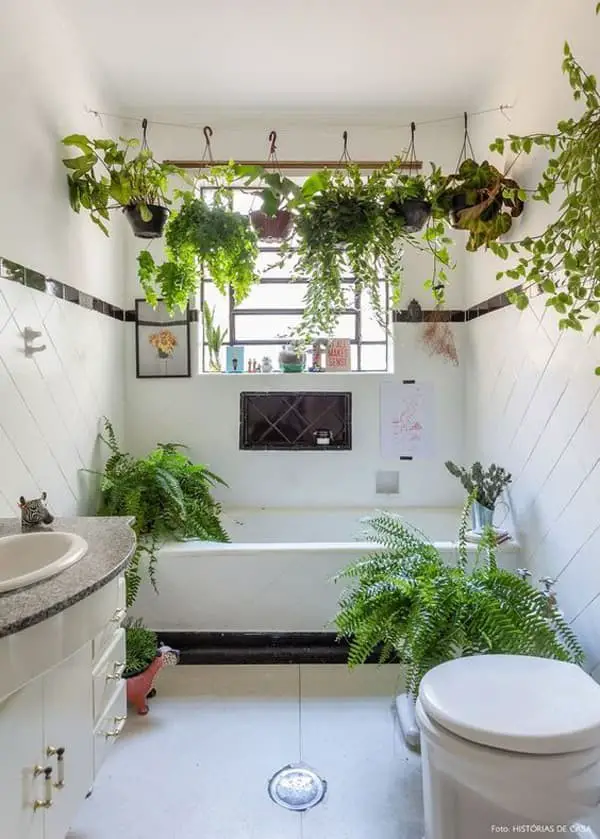
Transforming your bathroom into an indoor oasis can be a simple yet effective way to unwind after a long day. For those who indulge in leisurely hot baths, being surrounded by lush greenery can be incredibly therapeutic. The unique combination of warmth, moisture, and humidity created by steaming showers and baths provides the perfect environment for tropical species to flourish.
This harmonious blend of elements allows you to relax and rejuvenate while enjoying the calming ambiance of your indoor garden.
Gardening in Hydroponics
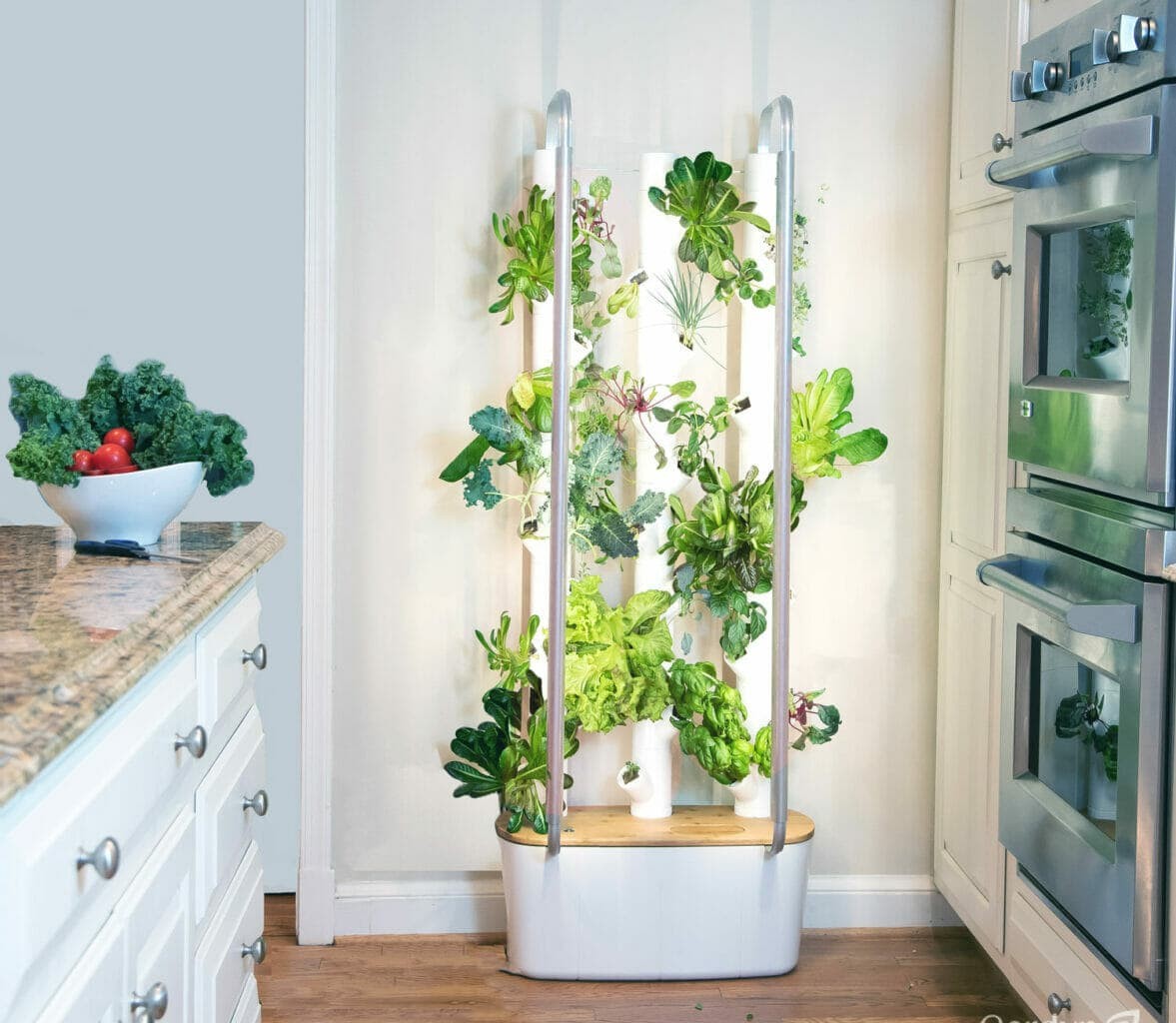
If you’re someone who thrives on achieving results and appreciates the visual appeal of thriving vegetation, a hydroponic produce system might be the perfect solution for you. By leveraging hydroponics’ impressive efficiency, you can coax plants to reach their full potential in record time. With the right setup, you’ll be able to cultivate a vibrant garden featuring fresh, lush flora that’s sure to bring joy and satisfaction.
Pictures That Are Alive
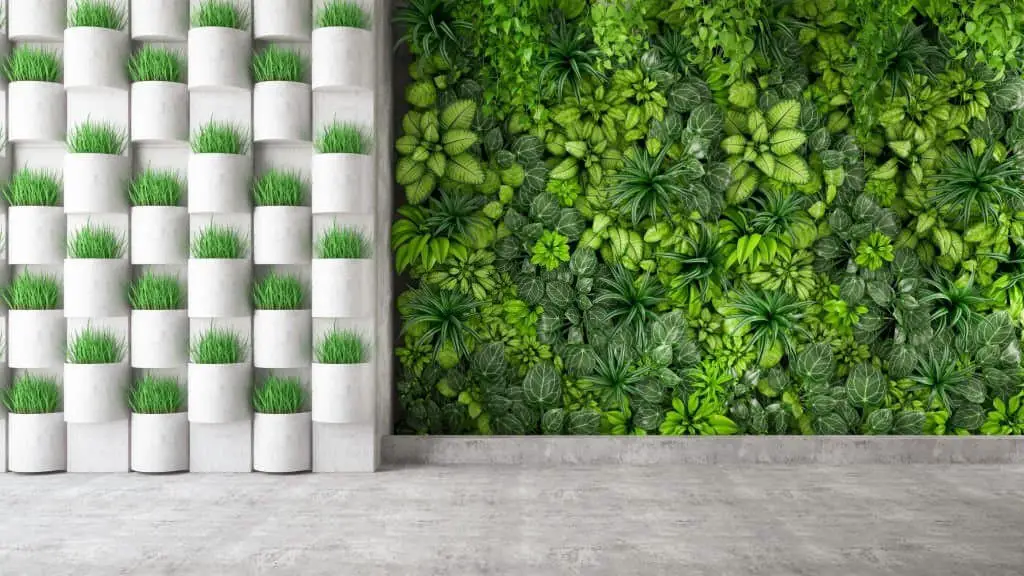
When it comes to showcasing your greenery, living photos can be a truly innovative approach. Succulents, in particular, lend themselves well to this creative display method. One option is to purchase a pre-made frame and simply fill it with your favorite succulent species. Alternatively, you can take a more hands-on approach by crafting your own custom frame that precisely meets your needs when it comes to size, shape, and aesthetic style.
Baskets to Hang
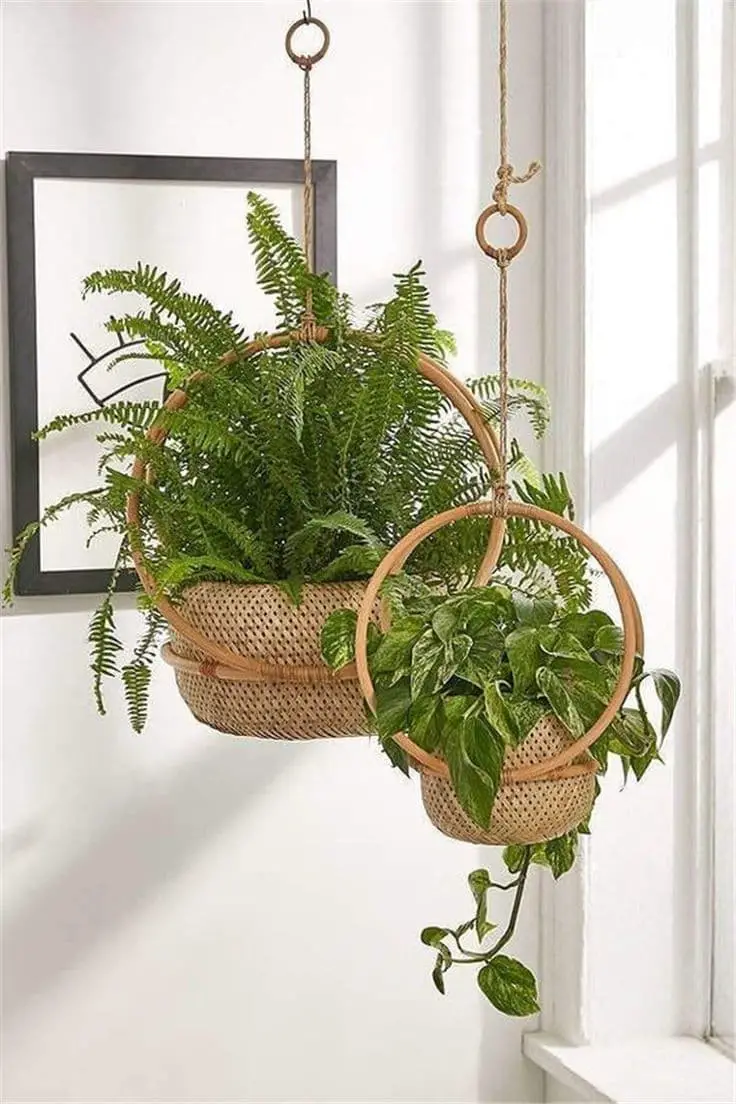
To create a beautiful and functional display of plants on your floors and countertops while keeping them free of clutter, consider using freestanding baskets. These versatile containers can be placed in various spots throughout your indoor garden to add depth and visual interest. When selecting hanging baskets for this purpose, make sure to choose ones without pre-drilled holes or at least those with drainage plugs to prevent waterlogged soil and root rot.
Pots that go together
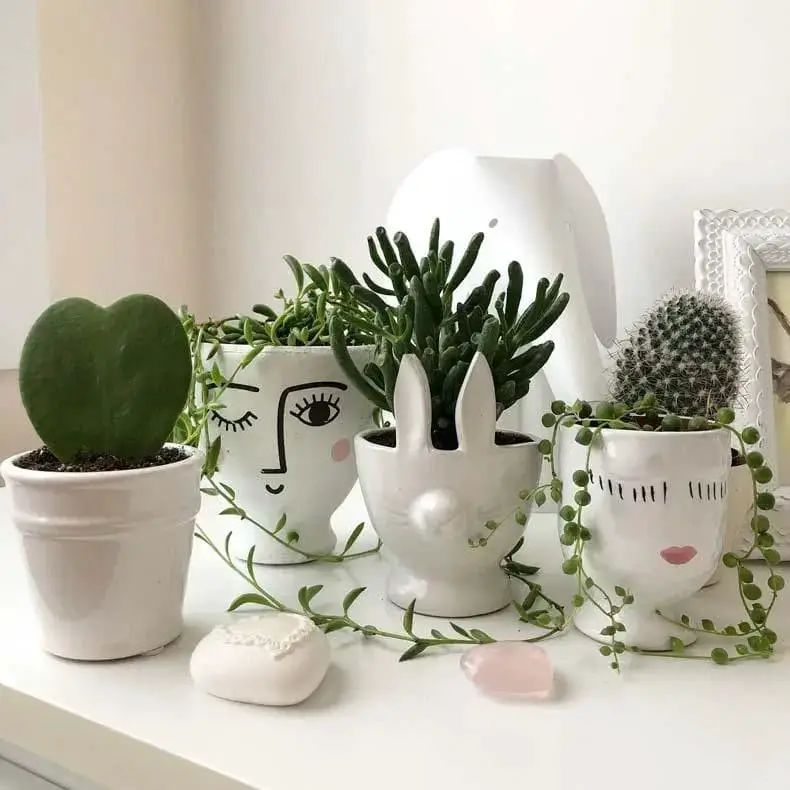
For a unique and visually striking display, consider using pots with identical designs but varying sizes. This cohesive look can be achieved by selecting vases with the same aesthetic, such as a specific pattern or shape, in a range of capacities. By incorporating different sizes into your design, you’ll create a sense of harmony that can be carried throughout an entire room, making for a truly show-stopping arrangement.
Garden of succulent
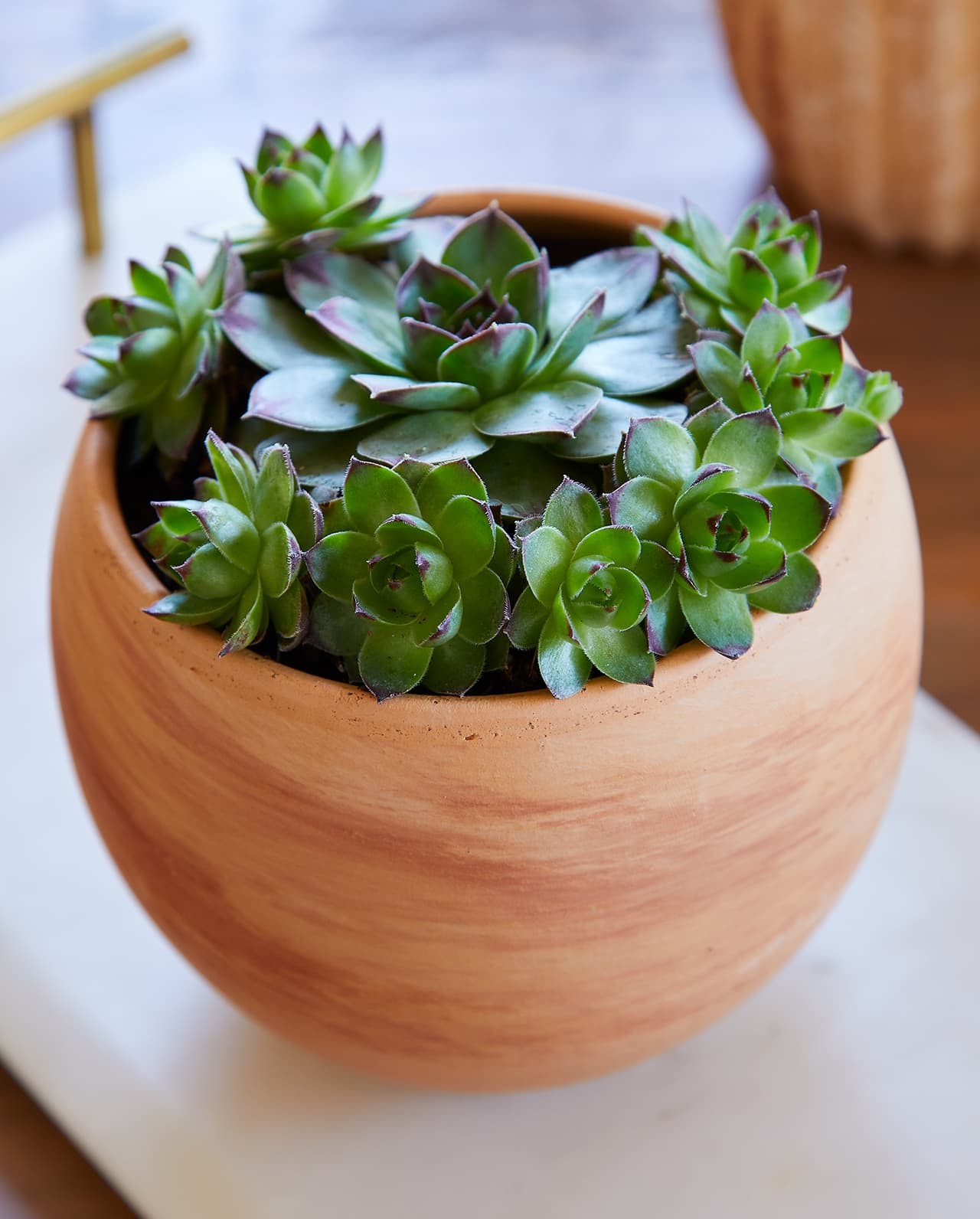
Succulents showcase an astonishing array of forms and dimensions, spanning from plump and rounded to slender and sprawling. Their foliage can be adorned with vibrant blooms or striking appendages in the shape of spikes, hairs, or even more intricate features. When cultivated together within a lush interior garden setting, succulent species create a unique ambiance reminiscent of a serene desert retreat.
Enhance the Ambience of a Relaxing Nook
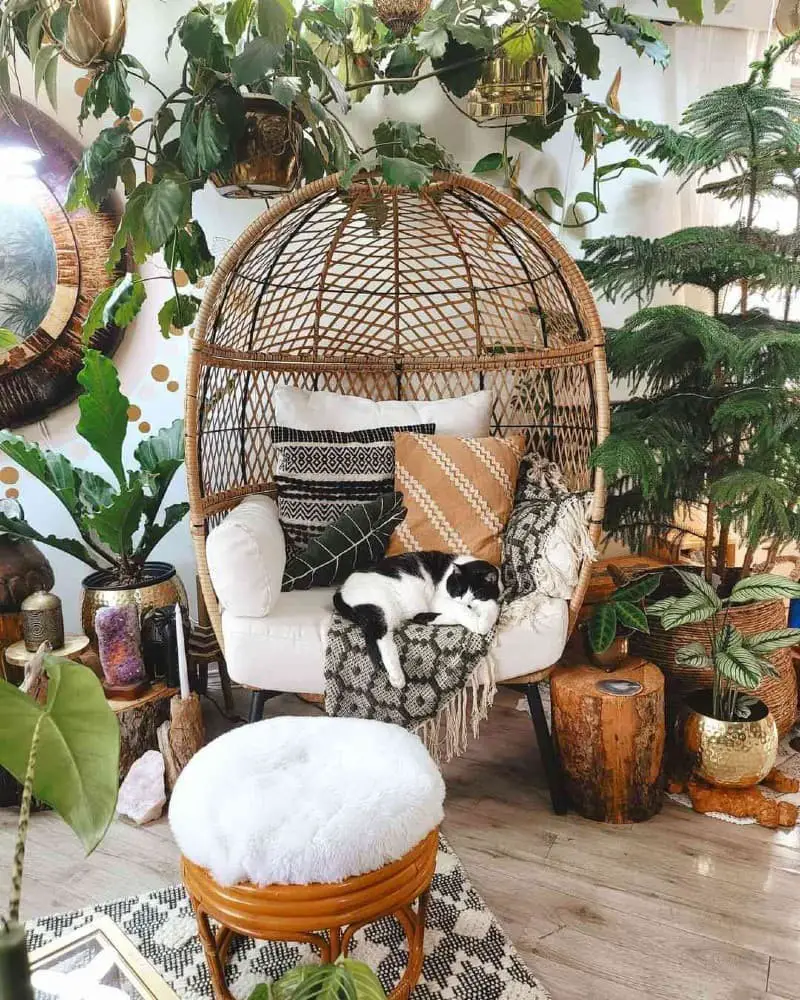
Studies have shown that immersing yourself in a lush, plant-filled atmosphere can have a profound impact on your mental well-being. Creating a serene retreat within a verdant setting provides the perfect opportunity for introspection and relaxation. Whether you’re seeking to calm your mind or simply savor some quiet time, this natural oasis can be an effective antidote to stress and anxiety.
A Vines-Trailing-Curtain
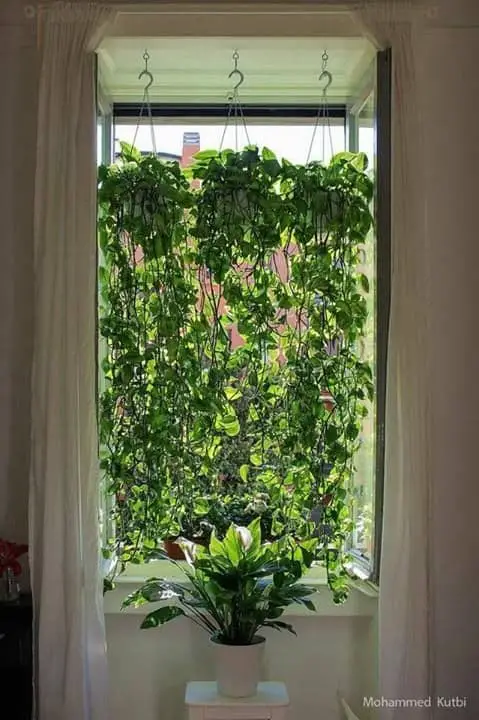
Transforming your space into a lush oasis can be achieved in a most unexpected way: by utilizing the versatility of trailing ivy. By hanging this low-maintenance, sun-loving plant from your drape rail, you’ll create a stunning visual display that’s sure to impress. The best part? It’s a great solution for small spaces or those looking to add a touch of greenery without taking up too much floor space.
Plants for Novices is a collection for plant lovers that are new to the hobby.
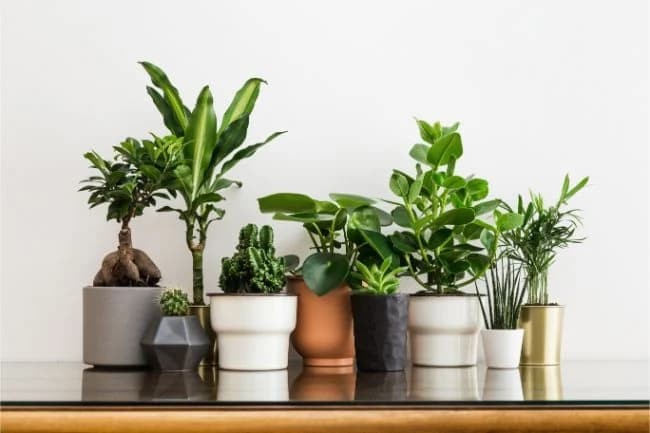
When it comes to cultivating a thriving indoor garden, novice growers and those looking to expand their plant collection often benefit from starting with easy-to-grow houseplants. The snake plant is a prime example of this approach, offering a foolproof entry point for anyone seeking to bring some greenery into their home.
Perhaps, a Japanese art
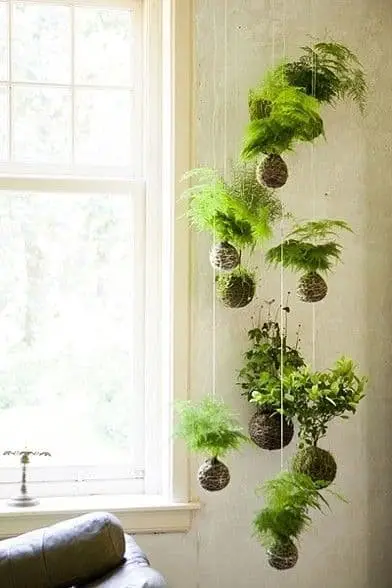
Transform your shaded living room into a serene oasis by introducing the unique charm of Kokedama balls, crafted from lush moss. To ensure their longevity, it’s crucial to maintain a consistent level of humidity around them, allowing you to create a captivating focal point that exudes simplicity and sophistication.
FAQs
What types of plants grow best indoors?
Among the most resilient and easy-to-care-for houseplants are pothos, snake plants, money trees, philodendrons, air plants, and monstera. These low-maintenance wonders make them perfect for beginners, individuals who frequently relocate, or those who spend extended periods away from their home, as they can thrive in a variety of environments with minimal upkeep.
What fruits can I grow indoors?
While geographical location isn’t a limiting factor for growing certain fruits, it’s entirely possible to cultivate a variety of fruits indoors using pots. Fruits like oranges, lemons, passion fruit, grapefruits, and figs can thrive in indoor conditions, making them accessible to anyone, regardless of their location.
What do you need for an indoor garden?
To create a thriving indoor garden, it’s not just about selecting the right plants and soil – it’s also about providing the perfect conditions for them to grow. Here are some key tips to keep in mind.
Firstly, choose plants that are well-suited to indoor environments. Look for species that require low sunlight and can tolerate low humidity levels. Some great options include ferns, peace lilies, and spider plants.
When it comes to soil, opt for a high-quality potting mix specifically designed for indoor gardens. This will ensure your plants receive the nutrients they need to thrive.
Watering is crucial in an indoor setting. Most plants require more frequent watering than their outdoor counterparts, so be sure to check the moisture levels regularly. A watering can or spray bottle can come in handy for misting your plants.
Lighting is also vital.
While some plants can tolerate low light conditions, most require at least four hours of direct sunlight per day. If natural light isn’t an option, consider using a grow light to supplement the light levels. This will prevent your plants from stretching towards the light source in search of more illumination.
Fertilization is another important consideration. Indoor plants need a boost of nutrients to stay healthy and strong.
Add a dose of fertilizer to the water once a month to keep your plants thriving.
Finally, pay attention to temperature. Most plants prefer cooler temperatures, so avoid placing them in drafty areas or near heating vents.
Do indoor gardens work?
While indoor gardens undoubtedly flourish when properly maintained, they do necessitate a certain level of upkeep. This includes regular watering and fertilization, as well as sufficient lighting. However, with dedication to these tasks, you can create an ideal environment that allows your plants to truly thrive. It’s crucial to select plant species that are well-suited to your indoor space, ensuring the best possible results.
Is indoor garden worth it?
While there isn’t a one-size-fits-all solution, the value of an indoor garden largely depends on individual factors, such as the time commitment you’re willing to make. However, for those seeking to bring some natural charm into their home, cultivating an indoor garden is certainly a viable option that’s worth exploring.
What is an indoor garden room called?
An indoor garden room, often referred to as a sunroom, greenhouse, or conservatory, is a space that combines the natural beauty of plants with the comfort and functionality of a interior room. Sunrooms, being the most common type, are characterized by large windows that flood the space with abundant natural light. In contrast, greenhouses are designed for year-round plant growth, while conservatories serve as a showcase for displaying exotic flowers and lush foliage.
Ultimately, an indoor garden room has the power to create a serene and visually stunning environment. With the right selection of plants and thoughtful design, you can transform your space into anything from a simple yet elegant setting to a vibrant tropical oasis or even a tranquil Zen haven. Adding a few well-chosen plants to your home can instantly revitalize the ambiance, and cleverly arranging them can completely reimagine the look and feel of a room.
We hope these ideas spark inspiration for you. Share with us your favorite indoor garden room concept in the comments below!
Related Posts
For those new to indoor gardening, choosing the right plants and providing proper care can be a daunting task. To help you get started, we’ve put together four essential tips for easy care flowering houseplants. Whether you’re looking to add some color to your home or want to start an indoor herb garden, these tips will ensure your plants thrive.
In addition, if you’re interested in exploring the world of indoor gardening further, we also offer a range of guides and resources on topics such as selecting the perfect indoor plants for your space, making your houseplants live longer, and troubleshooting common issues like leaf drop. Start your indoor gardening journey today!

